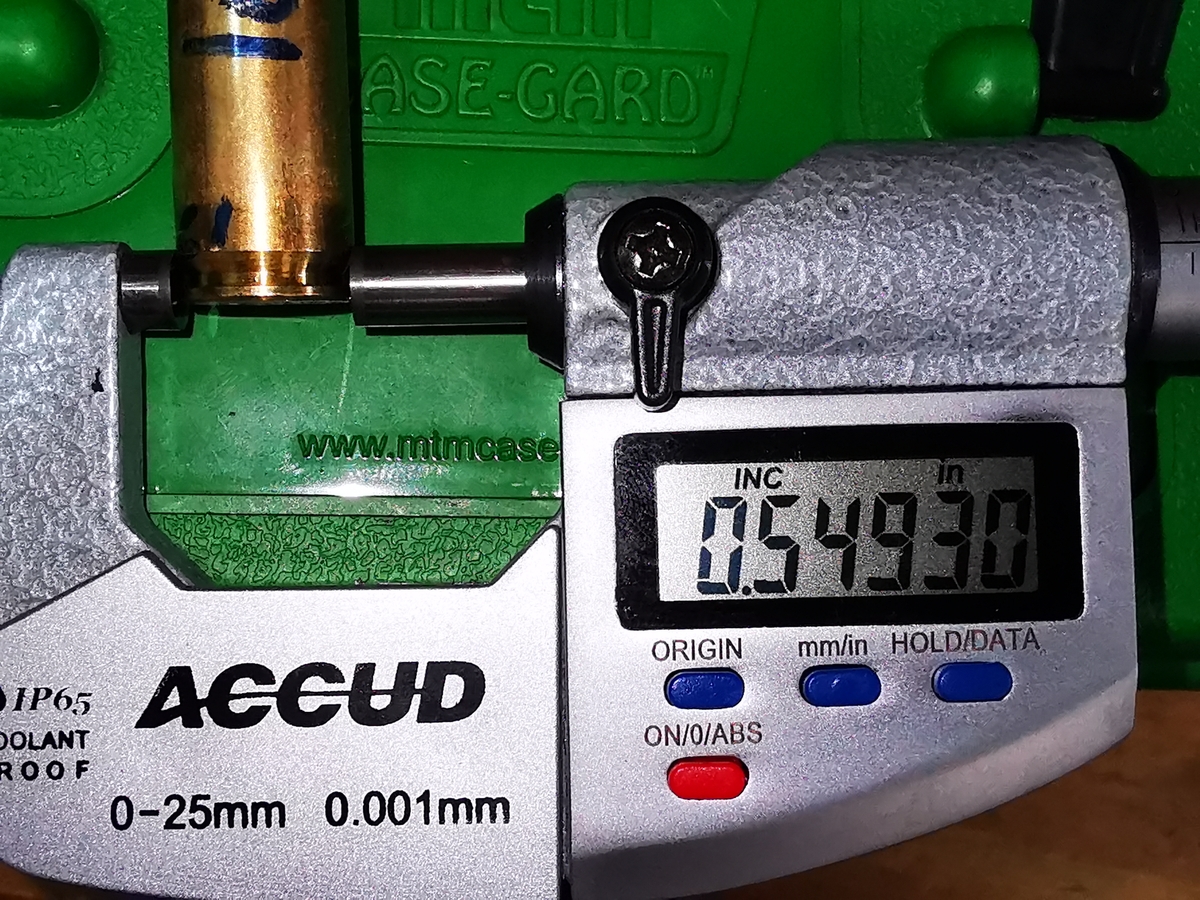Ysterhout Dot Net
The first rule of handloading is never deviate from the powder manufacturer's load data.
If you choose to deviate, you must have the tools to determine what the effect of the deviation is.
In the case of a custom bullet, the bullet manufacturer will usually provide indicative reloading data, which can be used to begin load development.
As all rifles are effectively unique when it comes to ballistics, it is necessary to determine where the safe limit is for your rifle.
A safe pressure limit is where the rifle can be fired with that load for the life of the barrel without mechanical damage.
There is a simple, reliable tool that can comparatively indicate chamber pressure to a reloader. The one ten-thousands micrometer. Think of it as a pressure comparator.
There are some popular [ and misleading ] approaches to determining max pressure
- inspection of the primer to determine
- flat primers
- cratered primers
- marks on the case head from the bolt or extractor
- feeling for a sticky bolt after firing
All those methods are unreliable. By the time you experience one of those, you may already be at a pressure higher than the SAAMI spec for the cartridge. You may also experience higher than SAAMI spec pressure with none of those signs.
A micrometer that can measure 1/10000 of an inch is totally reliable.
Using a micrometer that measures in ten thousandths [.0001"], new, unfired cases can be gauged before and after firing to determine, reasonably accurately, the effect of increasing powder charge on the brass, indicating relative pressure when comparing firings.
Micrometers measuring in thousandths [.001"] are insufficiently accurate to perform these measurements, and should not be used.
Previously fired cases cannot be used. Use virgin brass of the same headstamp or the measurement comparison becomes invalid.
Measurement is taken just ahead of the extractor groove on the case head and must be taken at the same place on the new case before and after firing. Belted magnums can be measured on the belt.
Once a case is fired, it cannot be used again for this test.
The Nosler site additionally provides the following information :
- Lower pressure rounds, like the .30-30 Winchester, usually yield maximum pressures at .0003"-.0004" expansion.
- The .223 Remington, will show maximum pressure at .0004"-.0005".
- .308 Winchester, .270 Winchester, etc., typically yield .0005"-.0006" expansion at max pressure.
- Magnums, like the .300 Winchester Magnum, show maximums at .0006”-.0007” expansion, and should be measured on the belt.
Randy Selby describes the method in his video - Measuring for pressure.
This is how these measurements were taken.

The RUM case has a slightly rebated rim, so a micrometer with a flat anvil works perfectly. Cases without rebated rims are best measured with a point or ball anvil.
Remember, this is not just about precise measurement of actual dimensions, it is about comparing the measurements. Two people, using the same tool, can get two different results, but if the brass is all measured the same way, the results can be compared relative to each other.
It may be that with a point micrometer measured at the edge of the extractor groove, the measured dimensions will be a little different, but the variation between the measurements should be the same whatever technique is used to measure.



